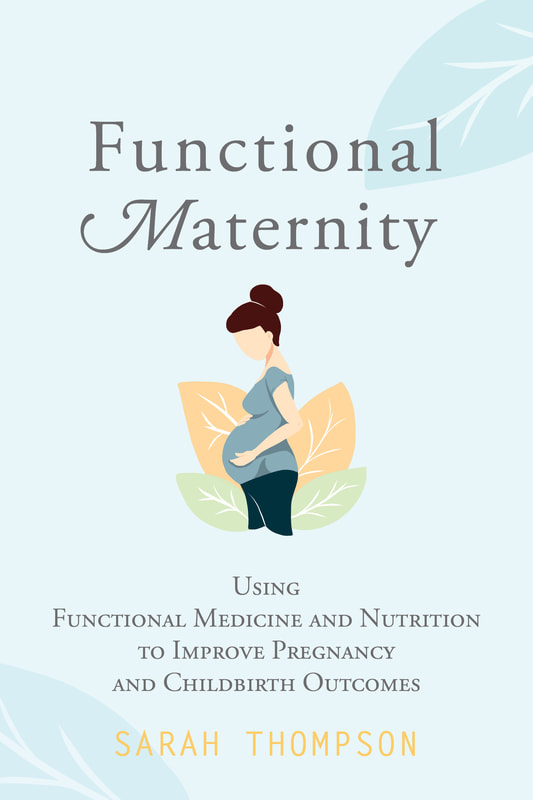A Quick Look at Early Placental DevelopmentMultiple factors can influence placental growth including nutrition, hormones, stress, genetics, maternal disease, and (of course with the topic of today's article) chemical exposure. The placenta develops from the cytotrophoblasts cells. At around 10 days post conception, these cells divide into invasion and syncytialization types. Invasion types form the villus and embed themselves into the uterine lining, anchoring the embryo and starting the process of arterial remodeling. Issues with this process have been associated with placenta accrete, increta, or percreta that can result in pregnancy loss, or bleeding during pregnancy and birth. Syncytialization types proliferate, lining the placenta villi and acting as a barrier between the maternal blood and the growing fetus. These cells produce progesterone, hCG, enzymes and other proteins. Poor syncytialization can cause poor progesterone production, and dysfunction in this process has been associated with preeclampsia and IUGR. Endocrine Disrupting Chemical ExposureEarly placental development is heavily influenced on endocrine hormones, and thus the placenta is rich in endocrine receptors, making it a vulnerable organ to endocrine chemical disruption. The development of the trophoblast cells in early pregnancy becomes the foundation for the rest of pregnancy physiology. Changes in the genetic expression or development of the placenta, specifically, can affect fetal growth and birth outcomes. Proper placenta development is dependent on genetic methylation, steroidogenesis, spiral arterial remodeling, cellular proliferation, and uterine invasion. All things that are influenced and affected by endocrine disrupting chemicals (EDCs). Separating the different chemicals and measuring their effect is difficult. Mostly because the average pregnant person is exposed to over fifty different chemicals at once. EDCs are found in our everyday life, in plastics, cleaning productions, skin care products, cookware, food, and our drinking water...and often travel together. Instead of breaking down each chemical and what they do, I'm discussing the different changes seen in EDC exposure. Endocrine Disrupting Chemicals and Trophoblast InvasionInvasion defines the ability of cells to use enzymatic secretions (catalyzed by zinc...by the way) to infiltrate the extracellular matrix of the uterine tissues and remodel the maternal arteries. Several EDCs have been shown to affect this function in both in vitro and in vivo studies. Of these phthalates, polybrominated diphenyl ethers (PBDEs), bisphenols (BPA), and polychlorinated biphenyls (PCBs) are the most associated. Phthalates are in nearly 100% of people tested. Phthalates reduce cytotrophoblast invasion by activating PPARy in HTR-8/SVneo line cells, reducing this line of cell growth, which is associated with pregnancy loss. PBDEs are cytotoxic in the second trimester and known to cause unexplained stillbirth. Exposure in the first trimester disrupts cytotrophoblast migration and invasion through the HTR-8/SVneo cell line and changes the expression of metalloproteinases by these cells. BPA exposure negatively affects cytotrophoblast invasion through hypermethylation and downregulation of WNT2 gene, and an upregulation of DNMT. BPA exposure has also been shown to decrease the expression of metalloproteinases. PCBs disrupt the invasion of HTR-8/SVneo cells by disrupting the balance between angiogenic and anti-angiogenic activities through inhibition of vascular endothelial growth factor. Endocrine Disrupting Chemicals and SyncytializationSyncytialization is the process of cellular fusion of cytotrophoblasts. These cells are hormonally active and create the labyrinth layer...the site of exchange between the maternal and fetal blood. Like the cells that divide to facilitate invasion, the syncytiotrophoblasts are sensitive to EDCs, possibly even more so than invasion cells, due to their hormone output. Of these chemicals, BPA, phthalates, PCBs organophosphates and organotin seem to have the most affect. In vitro BPA exposure alters syncytiotrotrophoblast proliferation, reduces estrogen production, and alters P450 enzyme activity needed for proper steroidogenesis vis a reduction in corticotropin gene expression. Histopathology observations of phthalate exposure of doses >20 kg/day showed a reduction in placental labyrinth formation, which is a noted defect found in IUGR. Phthalates concentrate more heavily in the placenta than another maternal organ. PCBs cross the placental barrier and can directly affect the growing fetus. Placenta PCB concentrations have been associated with a decrease in syncytriotrophoblast volume. Organophosphates (think Roundup) alter pregnancy chemicals, specifically the production of hCG. Interestingly organophosphates accumulate more in male placentas than female placentas. Organophosphates reduce syncotriotrophoblast cell viability and cause apoptosis. Organotin has been shown to cross the placental barrier and lead to embryonic death. In vitro studies show that organotin affects gene expression associated with cytokine expression, hCG production, PPARy, and the retinoid X receptor. QuestionsLittle research has been done on the effects of EDCs, fertility, and pregnancy, but the current evidence, EDC distribution, as well as the increase in reproductive issues and pregnancy complications begs us to increase research. Primary sources of these chemicals include everyday drinking water, body care products, and the foods we eat. If you are concerned, talk to your provider about testing options, or reach out to our clinic. Copyright © 2022 Functional Maternity, all rights reserved. The content in this article is not intended to be a substitute for professional medical advice, diagnosis, or treatment. Always seek the advice of your physician or other qualified health provider with any questions you may have regarding your medical condition.
3 Comments
Rebecca Belch
5/13/2023 08:26:40 pm
I am in the beginning stages of opening my own nurse integrative health practice. I want to focus on maternal care and pediatrics. I have worked as a labor and delivery nurse, ER, and ICU nurse and can’t wait to get out of conventional medicine! I am finishing up a functional medicine training program and found your book on Amazon. I just finished it and and now am so excited about helping moms have healthy pregnancies and babies! I would learn more about how to help these mamas!
Reply
song
9/4/2023 10:58:21 am
Hi Dr Thompson, can I buy your digital functional lab analysis book?
Reply
Leave a Reply. |
Hi There!I'm Sarah Thompson, a Certified Functional Medicine Practitioner who specializes in Maternal, Prenatal and Childbirth health. I'm also the author of Functional Maternity, and the upcoming book Beyond Results - A practitioner's Handbook to Effective Functional Lab Analysis in Pregnancy. Purchase BookArchives |





 RSS Feed
RSS Feed